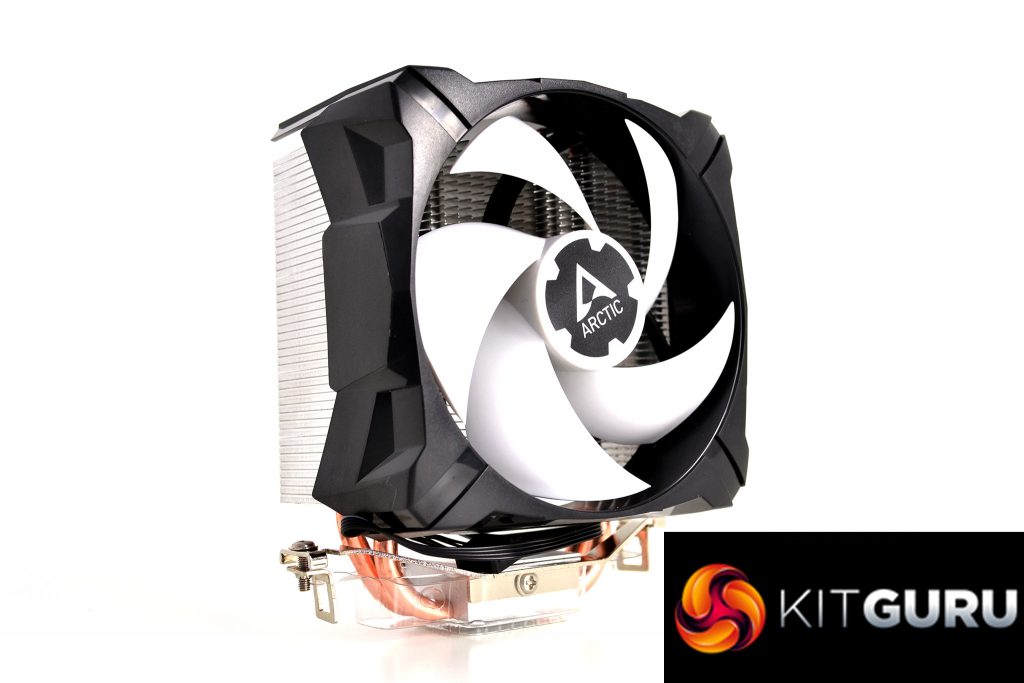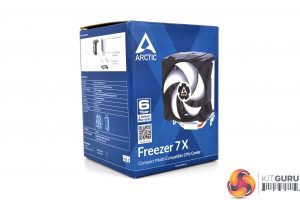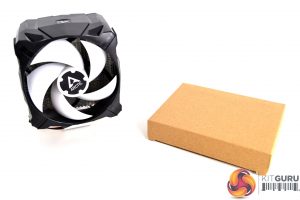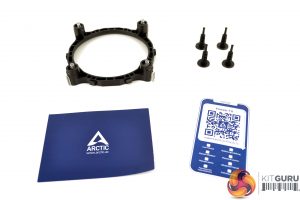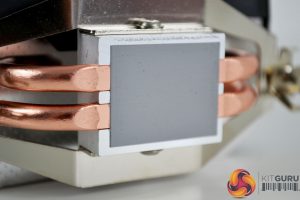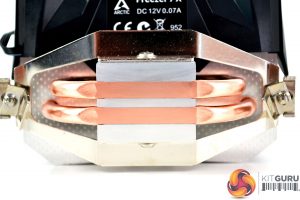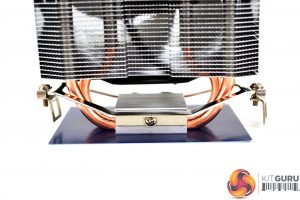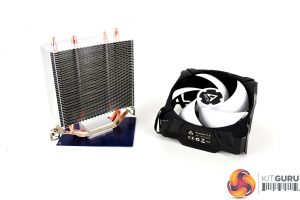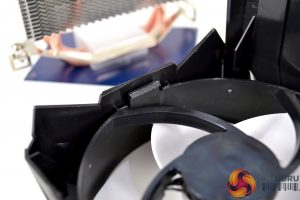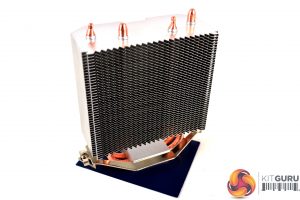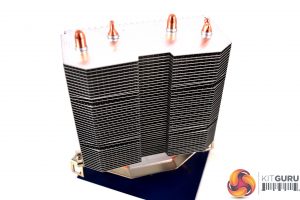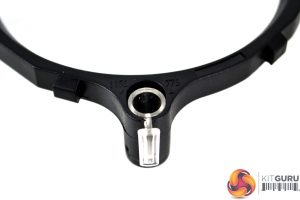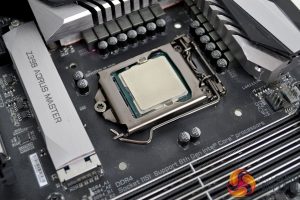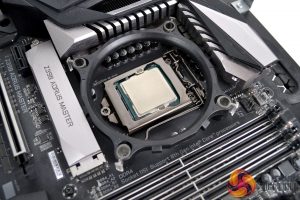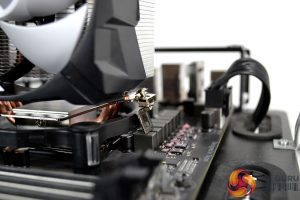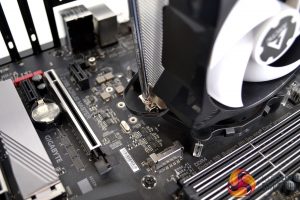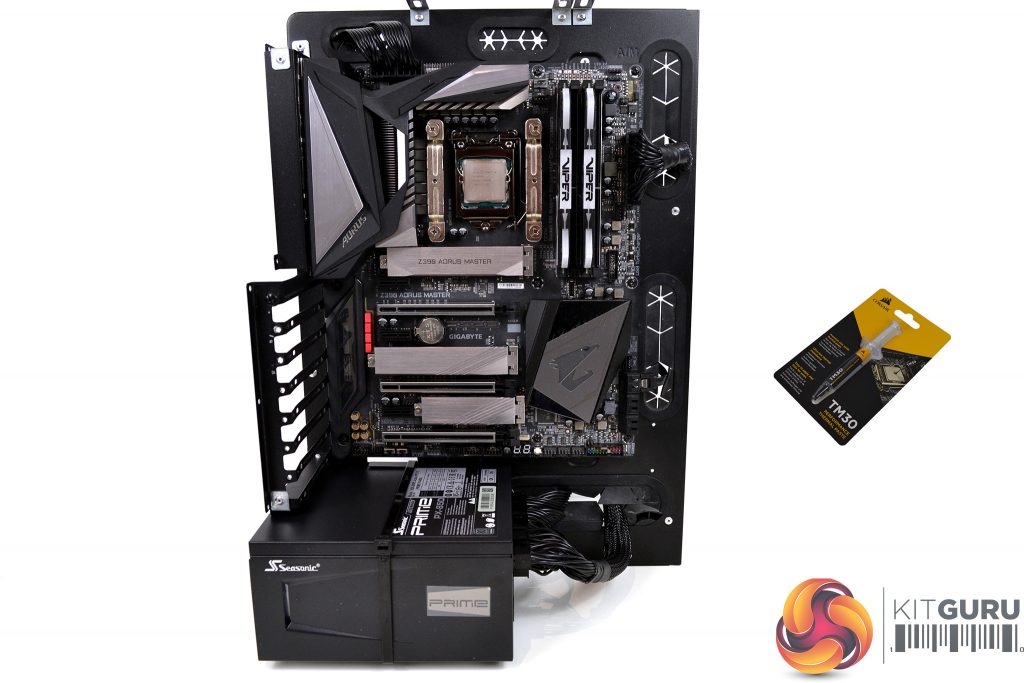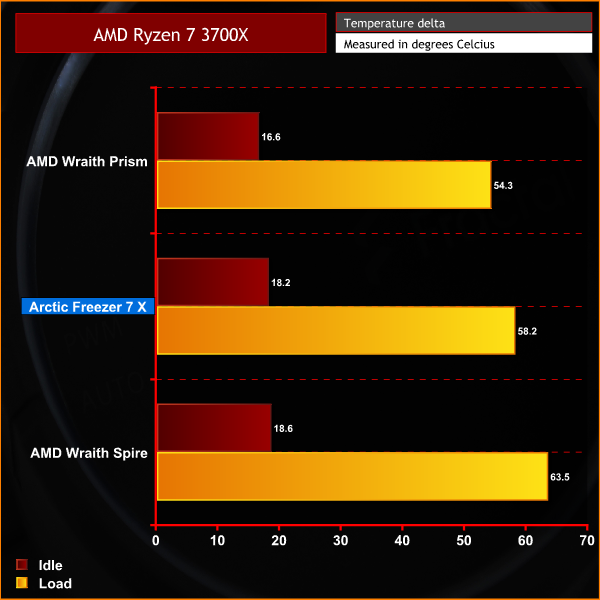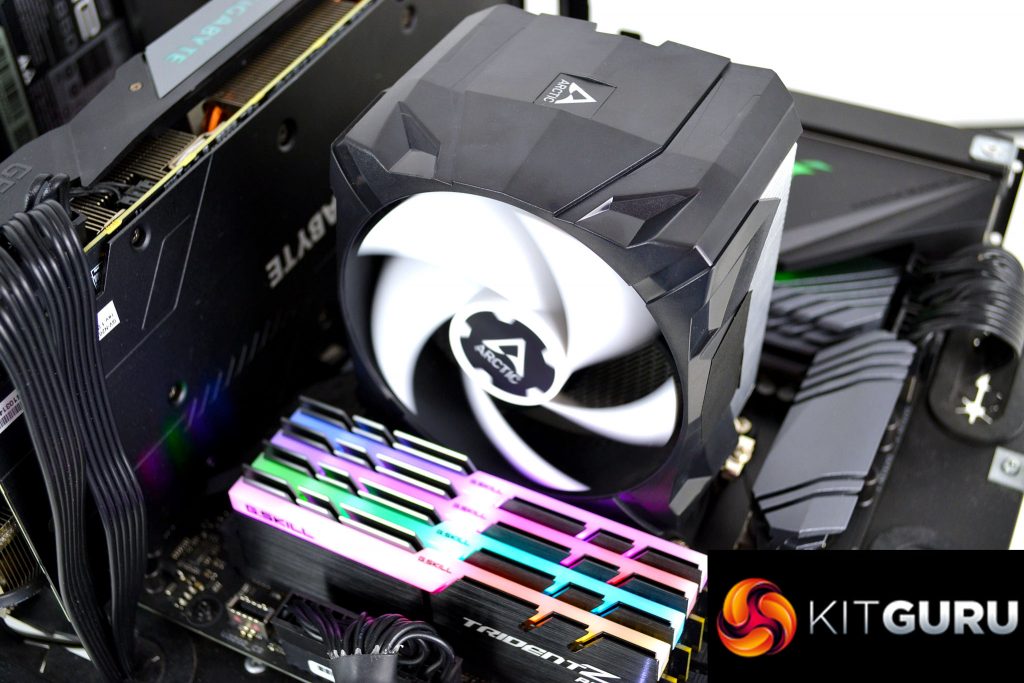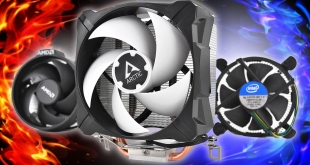
Arctic’s Freezer 7 CPU cooler series has provided an ultra-affordable alternative to stock CPU coolers for many years, and after ten years of loyal service from the Freezer 7 Pro, Arctic has finally introduced a new cooler to this range. The Freezer 7 X is Arctic's latest single tower, compact CPU cooler that aims blow stock CPU coolers out of the water, but just how good is it?
One of the first questions I asked myself when the Arctic Freezer 7 X landed on my desk was whether there is any need for a compact tower cooler like this in 2020. AMD bundles in very good stock coolers with its Ryzen series processors these days and the majority of enthusiasts using Intel processors will no doubt choose an all-in-one liquid cooler or a larger air cooler.
Arctic believes there is room in the market for such a compact cooler like the Freezer 7 X, so where do we think it fits in? According to Arctic’s testing, the Freezer 7 X offers improved thermal performance and low noise levels compared to the stock AMD Wraith Spire cooler, so users of AMD processors that come bundled with the Wraith Spire could use the Freezer 7 X as a cheap upgrade there.
Another option would be to replace the stock Intel cooler that comes with some of its lower-end Pentium and Core i3 processors, or use this cooler with a tray CPU that does not come with a cooler at all. To see just how capable the Arctic Freezer 7 X is, we will put it through its paces against the AMD Wraith Spire and Prism stock coolers and see how it handles a high-end Intel platform versus a stock Intel cooler too.
Compared with the previous Freezer 7 Pro, Arctic has trimmed down the size and features of the Freezer 7 X. There are just two 6mm direct touch copper heat pipes set into an aluminium base plate with a total of 44 aluminium fins that make up the heat sink. A single 92mm P-series PWM fan, optimised for high static pressure, is housed in a plastic shroud and clips directly to the heatsink.
According to Arctic, the P-series fan features a newly developed motor that runs quieter and more efficiently, thanks to its 20°C lower coil temperature compared with traditional fan motors. This increases fan lifespan and reduces power down from 0.25A to just 0.07A, which is effectively a 72% power consumption saving. The P-series fan used in the Freezer 7 X also has a broad PWM speed range of 300-2000 RPM.
Another benefit of the Arctic Freezer 7 X is the installation process. The Cooler uses the same mounting solution for AMD and Intel platforms so there is less preparation needed for installation. For AMD platforms, the Freezer 7 X utilises the stock AMD backplate and retention bracket while Intel installations only require a plastic bracket clipping into place on the motherboard before fixing the cooler in position.
Something that remains the same as previous Freezer 7 coolers is the cost. The Freezer 7 X is still an extremely affordable solution and is priced under £20 in the UK. In fact, from some online retailers, the Freezer 7 X can be currently found for as low as £17.99 which sounds like great value.
Key features
- Compact design
- Copper direct touch heat pipes
- Broad PWM fan speed range
- Simple installation
- 6-year warranty
Specification
| Heat Pipe | Direct Touch Ø 6 mm x 2 |
| Heatsink |
Aluminium Fins x 44, Thickness: 0.4 mm
|
| Thermal Compound | MX-2 pre-applied |
| Fan | 1 x 92mm, 300-2000 RPM (controlled by PWM) |
| Bearing | Fluid Dynamic Bearing |
| Connector | 4-pin connector |
| Noise Level | 0.3 Sone |
| Current/Voltage | 0.07A/12V |
| Dimensions | 110.5mm x 74.3mm x 132.5mm (L x W X H) |
| Net Weight | 425g |
| Socket Compatibility | AMD – AM4, AM3(+), FM1/2(+)
Intel – 1200, 115x, 775 |
Arctic has packaged the Freezer 7 X in a small cardboard box sporting the traditional blue theme. On the front is an image of the cooler, various Arctic Freezer 7 X logos and a reference to the 6-year warranty. At the rear are additional images outlining the key features and a small performance graph.
Inside the packaging is another smaller brown cardboard box as well as the cooler itself. The contents of the internal box include the Intel mounting bracket, four clips to hold the bracket in place, along with an Arctic compliments card and a QR code with a link to the installation guide.
The base of the cooler looks quite small and possibly will not offer full coverage of either current Intel or AMD mainstream desktop processors. The base is covered with a pre-applied thermal compound coating which will help speed up installation.
With the thermal compound coating removed, we can see that the two heat pipes run across the centre of the base plate, they have a smooth machined finished and are mounted in a pretty crude looking, but functional aluminium block.
A universal mounting bracket is pre-installed to the cooler and is used for both Intel and AMD platforms. It has hook style clasps at either end that are tightened into position by Philips head screws which looks like a very simple to use mounting solution.
The P-series fan also arrives pre-installed to the cooler and is housed inside a shroud that is designed to direct airflow at the heatsink. The fan, along with its shroud can be removed from the heatsink and is held in position by two clips. This makes it easy to remove but also means that is could be difficult to use the cooler with a different fan if required.
With the fan removed we can see all 44 of the heatsink fins with their spiked design at the fan side. Even though this is a cheap cooler, it seems to be well built and constructed from high-quality copper and aluminium materials with a sturdy feel to it.
Our test system is Intel Z390 based, therefore, we will be following the relevant Intel 115X socket installation procedure.
To begin installation on Intel platforms, first makes sure the mounting bracket retention mountings are set to the position that corresponds to your motherboard socket type, then place the bracket over the CPU socket aligned with the holes.
Push down on the bracket so that it clicks into position in the holes and then take the four black plastic clips and insert them into the mounting holes to lock the bracket in place.
The next part of the installation process threw up an issue for us, due to the large thermal solutions of our test system's Gigabyte Z390 Aorus Master motherboard, the Freezer 7 X mounting bracket interfered with the VRM and M.2 socket heatsinks. This is no real surprise since this cooler is technically not suited to these high-end platforms after all.
To overcome this issue, we removed the M.2 heat spreader and the VRM heatsink to complete the installation process. We were then able to lower the cooler down in position, locate the mounting hooks and screw it in position. Arctic clearly states on its website that there are compatibility issues with some motherboards and requests users to contact them for a solution. If users do encounter compatibility issues after purchase, Arctic will offer an alternative replacement cooler.
For the final step of installation on Intel platforms, connect the 4-pin fan power cable to the CPU_FAN header on the motherboard for full PWM speed control. Installation on AMD platforms is extremely simple and consists of hoking the cooler on to the stock AMD brackets, screwing into position and connecting the fan, the whole process should only take approximately 5-10 minutes on either platform.
Testing Methodology: Thermals/Acoustics
To measure the thermal performance of the Arctic Freezer 7 X, we devised an easily repeatable series of tests. The only variable is the coolers themselves to ensure the results can be accurately compared against one another.
Since the Arctic Freezer 7X isn't naturally suited to being used on a high-end system such as our usual Intel Z390 test bench, we have adjusted the testing procedure to better suit the occasion.
First, we will lock the Core i9-9900K at its 3.6GHz all-core base clock speed, with a 1.15V Vcore applied in the BIOS. Then, let the system idle in windows for 15 minutes and measure temperature. At the same frequency, we will then measure the load temperature to compare the thermal performance against coolers we have tested previously and add in data from a stock Intel cooler at this CPU frequency.
We will then move the Freezer 7X over to an AMD X570 based system with a Ryzen 7 3700X processor running at stock configuration and measure the thermal performance compared with stock AMD Wraith Prism and Wraith Spire coolers.
The temperatures presented in the graphs will be average Delta temperatures measured over the length of the test. We will calculate the Delta temperature by deducting the ambient temperature in the test room from the measured CPU temperature, both at idle and under load. Corsair TM30 thermal compound is used at all times to ensure consistency and all CPU fans will be set to maximum RPM to determine the raw thermal performance.
Intel Test Rig
- CPU – Intel Core i9-9900K
- Motherboard – Gigabyte Z390 Aorus Master
- Memory – 16GB (2x 8GB modules) Patriot Viper RGB DDR4-3600 CL16
- Storage – Corsair Force LE 120GB SATA SSD
- Power Supply – Seasonic Prime PX-850 850W
AMD Test Rig
- CPU – AMD Ryzen 7 3700X
- Motherboard – Asus ROG Strix X570-E Gaming
- Memory – 32 GB (4 x 8 GB modules) G.Skill Trident Z RGB DDR4-3200 C16
- Graphics card – Gigabyte RTX 2070 Super Gaming OC 8G
- SSD – 500 GB Corsair MP600 PCIe Gen 4 M.2 NVMe
- Power Supply – Seasonic Prime PX-850 850W
Noise Testing
Noise levels will be measured with our sound meter at a distance of 1 meter from the test bench. The cooler’s fans will be set to their maximum RPM rating. The ambient noise level in the room is measured at 37.5dBA and the peak noise level of the cooler will be recorded in dBA.
Thermal Performance
During our usual thermal performance test on the Intel Z390 test bench with the Core i9-9900K CPU set at an all-core frequency of 3.6 GHz, the Arctic Freezer 7 X is way down our chart which is to be expected. However, the Freezer 7 X beats the stock Intel cooler by over 20°C under load.
When measuring the thermal performance of the Arctic Freezer 7 X against the two most popular stock AMD coolers, we can see that it easily outperforms the Wraith Spire by just over 5°C while the Wraith Prism has the best thermal performance out of the three. Again, this is no great surprise since the Prism has double the heat pipes of the Freezer 7 X and is one of the best stock CPU coolers we have seen in many years.
Noise Levels
With all the coolers' fan speeds set to 100% RPM, the Arctic Freezer 7 X is noticeably quieter than both of the AMD stock coolers, so anyone looking for a cost-effective and quieter alternative to the stock coolers could see the Freezer 7 X as an attractive proposition. This also shows that the Freezer 7 X has a good balance between noise levels and thermal performance.
The main aim of this review was to establish whether a budget CPU cooler such as the Arctic Freezer 7 X is still relevant in 2020. In years gone by when stock CPU coolers were just a block of aluminium with an annoyingly loud and small fan on top, the Freezer 7 X would have been thought of as a decent upgrade and probably found itself inside some low-mid range gaming PCs.
However, that’s not the case these days especially if you are an AMD Ryzen user. The stock AMD CPU coolers bundled with Ryzen processors are genuinely more than acceptable in terms of thermal performance of general use PCs and even some gamers are happy with the performance and appearance, the stock Wraith Prism even has RGB lighting.
What about Intel platforms? Well, Intel only bundles a cooler with its low-end processors these days and they are adequate for the thermal loads they will encounter, so an upgrade may be a little pointless. I would also expect users of the higher-end Intel K series CPUs to be going for a thermal solution with a little more cooling headroom. However, I would expect the Freezer 7 X to be more than capable of cooling an Intel Core i5-9400 or similar CPU.
So, that leaves us with tray processors. I remember a time when tray processors were much more accessible for mainstream consumers to purchase, but these days it seems as though that is a dying trend. However, for those who can still purchase tray processors, the Arctic Freezer 7 X might be a good cost-effective option for cooling PCs built with these CPUs.
The Freezer 7 X is around the same price as an AMD Wraith Spire cooler and is generally cheaper to purchase than the Prism, which makes it a viable option for anyone buying AMD Ryzen processors from the tray. Not only is it cheaper, but the Freezer 7 X also offers similar thermal performance and is much quieter than the stock AMD coolers.
Taking into account its size, thermal performance, noise levels and cost, the Arctic Freezer 7 X would be a solid choice for someone looking to purchase a CPU cooler on an extremely tight budget. However, if you have a little more cash in the budget, we would recommend spending that bit extra for more thermal headroom.
The Cooler Master Hyper 212 is priced at just over £20 now and Arctic itself has the Freezer 34 eSports Duo priced at around £35 which is a seriously impressive single tower cooler. The Freezer 7 X is physically smaller than both of these, so maybe it could be worth considering for a budget small form factor build. With all that said, it still seems like quite a limited market for the Freezer 7 X.
However, there are some genuinely good points to the Freezer 7 X, its low cost is obviously one, a universal and simple installation process means it can be quickly fitted to either AMD or Intel based systems and the thermal performance is actually very positive. Noise levels are also very tolerable and the fan has a broad PWM speed range so users can tune the fan noise and performance to their preference.
The heatsink seems to have been manufactured from high-quality materials and Arctic offer the Freezer 7 X with a six-year manufacturers warranty. The combination of black, white and silver aesthetics means it should also fit in well with most system themes and colour schemes, so in its own right, it is a good little CPU cooler, just maybe not suitable for a large chunk of the market.
The Arctic Freezer 7 X is available to pre-order from Overclockers UK priced at £18.95 HERE.
Discuss on our Facebook page HERE.
Pros
- Quick installation.
- Small form factor.
- Solid thermal performance.
- Affordable price.
Cons
- Incompatible with certain motherboards.
- Only relative to a small market
KitGuru says: The Arctic Freezer 7 X is designed to provide a cheap alternative to stock CPU coolers and it does exactly what it is set out to do. However, we can't help but feel that it may only appeal to a very limited market , especially when AMD's stock coolers have improved so much.
 KitGuru KitGuru.net – Tech News | Hardware News | Hardware Reviews | IOS | Mobile | Gaming | Graphics Cards
KitGuru KitGuru.net – Tech News | Hardware News | Hardware Reviews | IOS | Mobile | Gaming | Graphics Cards


